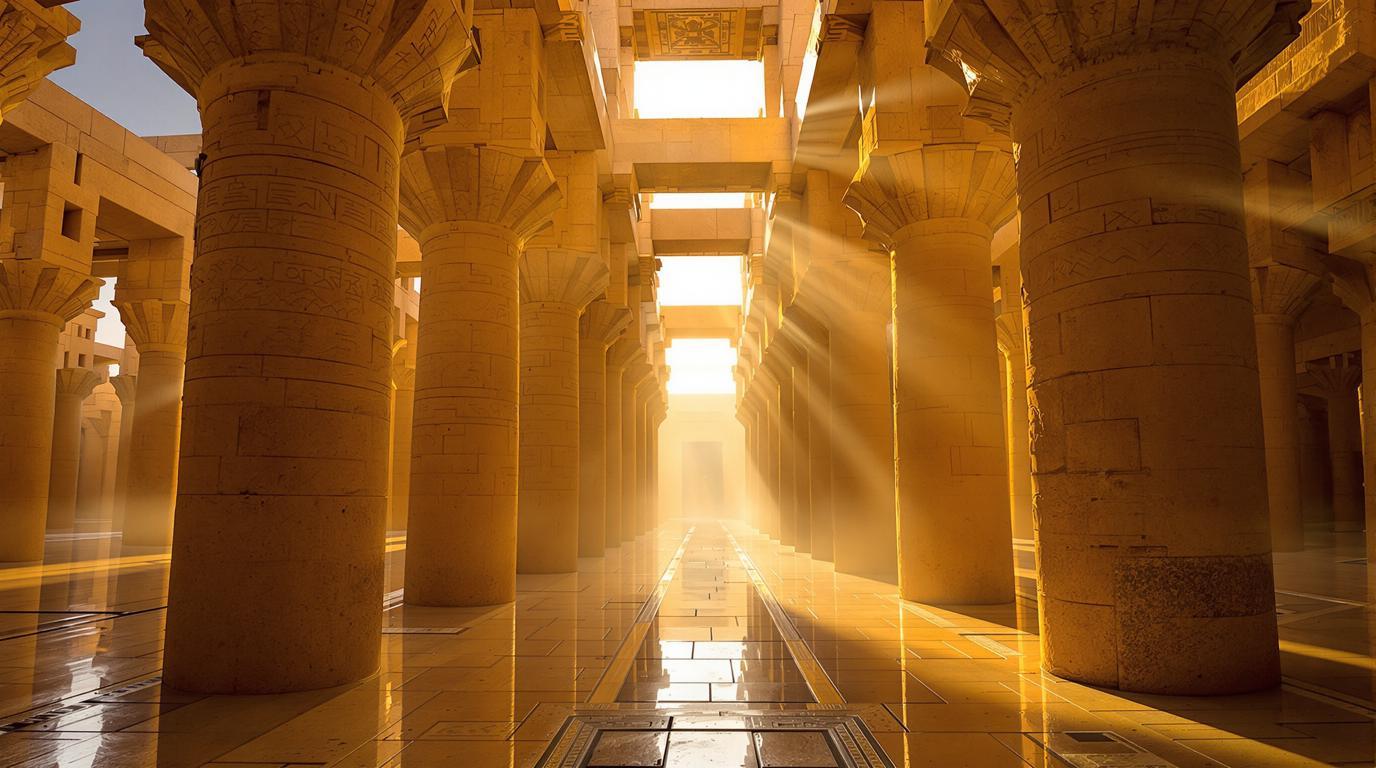The colossal pillars of Karnak Temple cast long shadows across the ancient stone floor as the morning sun peeks over the horizon. While Egypt’s pyramids may dominate travel brochures, this sprawling temple complex in Luxor harbors secrets that even the pharaohs might have forgotten. Spanning over 200 acres and constructed continuously for more than 1,500 years, Karnak stands as humanity’s second-largest religious site after Cambodia’s Angkor Wat.
The hypostyle hall: an ancient forest of stone
Step into Karnak’s famed hypostyle hall and find yourself dwarfed by 134 massive columns soaring up to 70 feet high. This architectural marvel was designed to replicate a papyrus swamp—the mythological birthplace of creation. Early morning light streams between these pillars, creating an ethereal display that has captivated visitors for millennia.
“The columns were deliberately arranged to create the illusion of a dense forest,” explains Egyptologist Hassan Mahmoud. “Walking through them today, you can still feel the sacred atmosphere the ancient priests cultivated to honor Amun-Ra.”
A hidden lake with ancient purification rituals
Tucked away from the main tourist paths lies the Sacred Lake, a rectangular pool where priests once performed dawn purification rituals. This tranquil spot offers perfect reflections of the surrounding structures and provides respite from the crowds that pack the main halls. Stand here at sunrise for a moment of quiet contemplation—just as religious leaders did 3,000 years ago.
The avenue of sphinxes: an ancient procession route
Recently restored, this 1.7-mile sphinx-lined avenue once connected Karnak to Luxor Temple. Walking this ancient processional route feels like stepping into a time machine. Local legend claims that following the entire path at sunrise brings good fortune for travelers—a ritual worth testing during your visit.
Sound and light after dark
As day turns to night, Karnak transforms during its renowned sound and light show. Unlike similar displays at other Egyptian monuments, Karnak’s nighttime illumination highlights architectural details invisible during daylight hours. The narration weaves together the complex’s 2,000-year history as projections bring hieroglyphics to life.
Beyond the temple: local experiences
Just outside Karnak’s walls, local artisans create alabaster carvings using techniques passed down through generations. Many workshops welcome visitors to observe their craft, offering authentic souvenirs far removed from mass-produced market trinkets.
For adventurous palates, nearby family-owned restaurants serve koshari—Egypt’s beloved street food combining rice, lentils, pasta, and spiced tomato sauce. As one local chef told me, “You haven’t truly experienced Egypt until you’ve shared koshari with a Luxor family.”
Photography tips for capturing Karnak’s magic
Photographers should arrive at opening (typically 6 AM) to capture the golden light streaming between columns. The sacred lake offers stunning reflections around 7 AM, while the massive pylons (temple gateways) are best photographed in late afternoon when shadows accentuate their intricate carvings.
Karnak represents just one magnificent chapter in humanity’s architectural story. Other breathtaking ancient wonders await, like Turkey’s underground cities and the crystal waters of Lake Baikal in Siberia.
The temple complex rivals even Europe’s spectacular natural formations in its ability to inspire awe. Its engineering feats remain as impressive as those found in Darwin’s evolutionary laboratory of the Galapagos.
“Karnak doesn’t merely showcase ancient Egyptian architecture—it reveals their cosmic understanding. Every stone was placed with purpose, creating a calendar, observatory, and temple in one,” notes archaeologist Dr. Sarah Williams.
Like Mediterranean islands where tradition still rules, Karnak offers a glimpse into a world where divine power and human ingenuity merged to create something eternal. Standing amid these massive columns as golden light filters through, one can’t help but feel connected to the countless generations who have stood in wonder at exactly the same spot—all equally humbled by what human hands created millennia ago.
